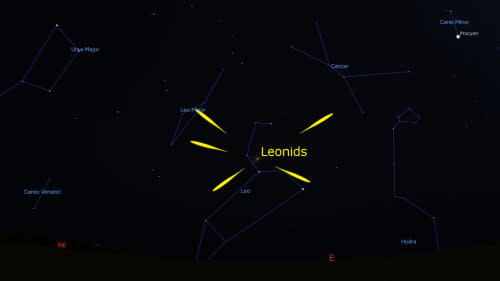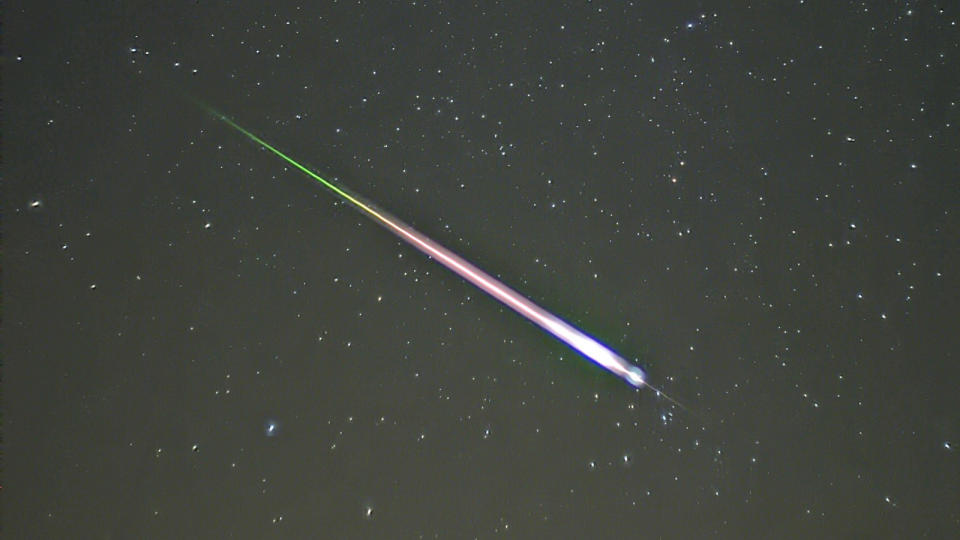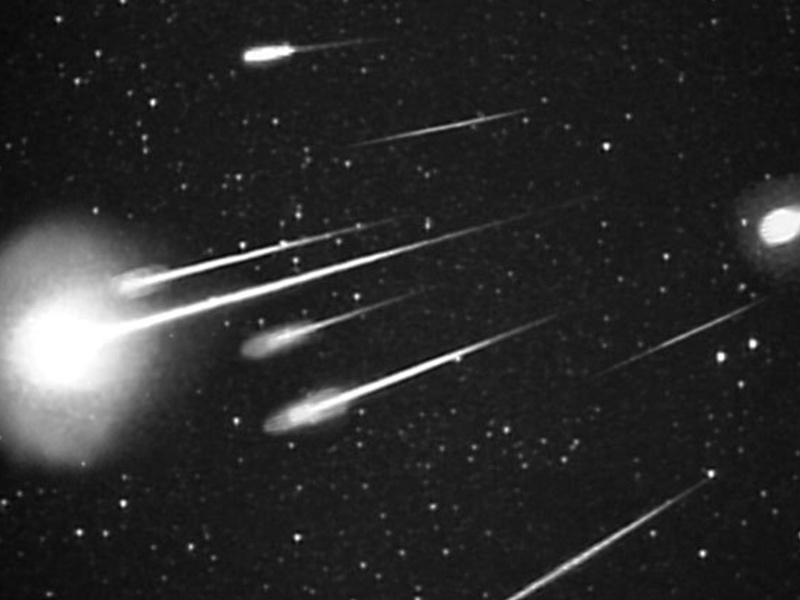A spectacular Leonid meteor outburst may light up the sky tonight

Most years, the November Leonid meteor shower passes without much notice or fanfare. However, this year may be different, as experts predict a rare meteor outburst overnight tonight.
Every November, Earth passes through a stream of debris in space, left behind by a nearly 2-km-wide chunk of dusty ice known as comet 55P/Tempel-Tuttle. The comet crosses Earth's orbit once every 33 years. With its last flyby in 1998, it is now way out near the orbit of Saturn, slowly making its way back toward the Sun.
Each year, throughout November, tiny bits of comet Tempel-Tuttle are swept up by Earth's atmosphere and go streaking through the sky as bright meteors. With these meteors all appearing to originate from within the constellation Leo, this is known as the Leonid meteor shower.

The radiant of the Leonid meteor shower, in the eastern sky, at around 1 a.m. EST on Saturday, November 19, 2022. Credit: Stellarium/Scott Sutherland
Although Leonid meteors can be seen all month long, the night of November 17 is usually the best time to look up. That's when Earth reaches the densest part of the debris stream and thus produces the greatest number of meteors.
This meteor shower typically only produces a handful of fast, bright meteors each hour, even during its peak. Individually, these meteor flashes can be pretty impressive. Due to their speed, at over 70 kilometres per second, Leonid meteors can also produce a phenomenon called "persistent trains" — glowing ionization trails in the air that can last for minutes or even hours.

This Leonid meteor was spotted from southern California during the 2009 meteor shower. Credit: Navicore/Wikimedia Commons (CC by 3.0)
Still, with one showing up every five to six minutes or so, stargazers need to show a lot of patience and keep a keen eye on the sky.
This year may be very different, though! In the early hours of Saturday, November 19, we may be in for a special treat!
A Leonid Outburst in 2022?
The 2022 Leonid meteor shower is predicted to be a bit better than usual, but at a slightly unusual time.
During the peak — overnight from Thursday, Nov. 17 to Friday, Nov. 18 — there was likely only around 10 meteors per hour throughout the night (if you had clear skies).
However, it's overnight on Friday night to Saturday morning that we really need to look up!
According to the International Meteor Organization, there is a chance we could see an intense outburst of meteor activity from around 1-1:30 a.m. EST, on the morning of Saturday, November 19.

This zoomed-in image of the night sky shows a burst of Leonid meteors spotted from an altitude of 38,000 feet, during the Leonid Multi Instrument Aircraft Campaign in November of 1999. Credit: NASA/Ames Research Center/ISAS/Shinsuke Abe and Hajime Yano
Based on the calculations of two meteor experts, by Mikhail Maslov in 2007 and by Mikiya Sato in 2021, Earth is going to pass through a dense concentration of comet debris at that time.
From Maslov's predictions, observers could see meteor rates of up to 300 per hour during the outburst, and he expects these meteors to be very bright!
Sato's more recent work is a bit more conservative, with a rate of just 50+ meteors per hour during the outburst. However, that is still substantially higher than normal for the Leonids.
The IMO is quick to point out that since these are estimates, the exact strength and duration of the outburst are still unknown.
"It may be only a few minutes long as the Earth passes quickly through these debris fields," the IMO said.
It could last longer, though. The estimates are based on the path that Comet Tempel-Tuttle traced as it crossed Earth's orbit way back in 1733, along with factoring in how the debris in the stream would have been affected by gravity, sunlight, etc, over the years since then.
Will we see it?
According to both Maslov and Sato, the timing of the event specifically favours viewing from the eastern half of North America.
The weather forecast for the eastern half of Canada shows mainly clear skies for the Windsor to Montreal corridor during the outburst, with a mix of cloud and clear skies through southern Quebec and Atlantic Canada.

A note on the timing: For typical meteor shower viewing, any word on the timing is given in "local time". This is due to Earth's rotation swinging each region into the meteor debris stream at the same time of local night.
For this meteor outburst, the exact timing matters a lot more. It is expected to happen precisely from 1-1:30 a.m. EST.
At that same time in the NST and AST time zones, Earth will not yet have encountered this concentrated clump of comet debris. In time zones farther west, we will likely have already passed through the debris by 1 a.m. there.
So, for everyone who attempts to view this, no matter where you are, we all have to be watching at exactly the same time.
2:30-3 a.m. NST
2-2:30 a.m. AST
1-1:30 a.m. EST
12-12:30 a.m. CST
11-11:30 p.m. MST
10-10:30 p.m. PST
The other suggestions for watching meteor showers also apply here: get away from (or at least avoid) city light pollution as much as you can, and give your eyes about 20 minutes or so to adjust to the dark, beforehand, so you have the best chance of spotting meteors.
I wish you all clear skies and good luck!
Leonid Meteor Storms
While the Leonids are typically one of the weakest annual meteor showers, it has given us some of the most spectacular meteor storms in history.
The most famous occurred in November of 1833 when thousands of meteors lit up the night sky. One estimate tallied more than 240,000 meteors over the course of nine hours!

This engraving depicts the 1833 Leonid meteor storm, based on the first-person account of the event. Credit: Adolf Vollmy, 1888
Before this event, it was thought that meteors were a phenomenon that originated in Earth's atmosphere. The word 'meteor' comes from the Greek word metéōros, meaning "the study of things high in the air." That is why meteorologists study the atmosphere and forecast the weather.
It was the study of this event that led scientists to realize that these flashes of light were actually caused by objects plunging into the atmosphere from space. However, the word had been used for so long to describe the phenomenon that it just stuck.
According to the American Meteor Society, in addition to 1833, meteor storms from the Leonids were also seen in 1866, 1966, 1999, and 2001. Based on their calendar, the next one is expected in 2099.

